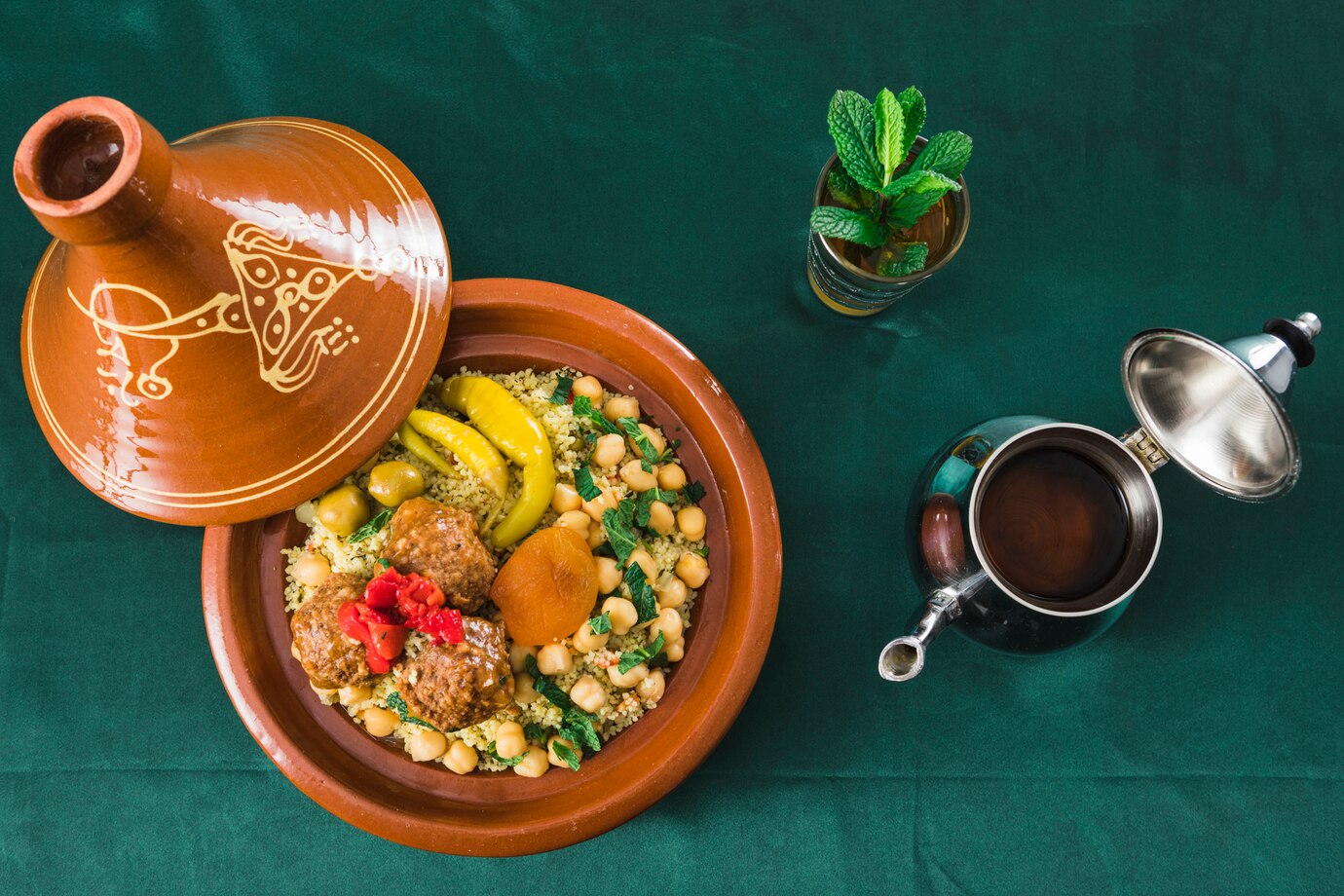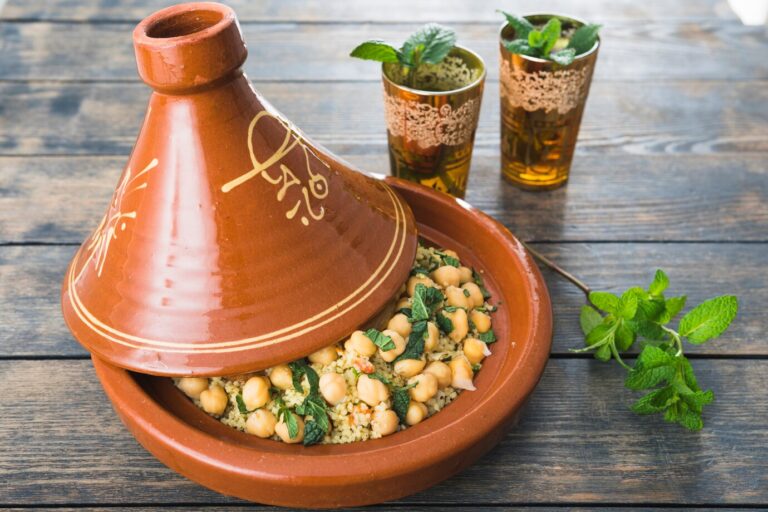Le Creuset Tagine: 7 Reasons It Beats a Regular Pot
Ever wondered what makes a Le Creuset tagine so special?
If you’ve been cooking for a while, you’ve probably heard of the famous Le Creuset tagine. But what exactly makes it stand out from your everyday pots? Could it really make a difference in how your food turns out? If you’re curious about why so many chefs and home cooks swear by it, you’re in the right place. Let’s dive into the reasons why the Le Creuset tagine might just be the game-changer you need in your kitchen.
What’s so special about the Le Creuset Tagine?
A tagine is a traditional North African dish that’s known for its tender meat, savory spices, and hearty vegetables. While you can certainly make a tagine in a regular pot, using a Le Creuset tagine brings something extra to the table. Le Creuset’s high-quality cast iron combined with its unique design creates an ideal cooking environment for slow-cooking dishes. Whether you’re preparing a classic Moroccan tagine or experimenting with your own variations, this tagine makes the process easier, more efficient, and tastier!
This dish takes about 1.5 to 2 hours to cook, depending on your ingredients, and is perfect for home cooks who want to create flavorful meals without too much hassle. The difficulty level is easy, as long as you follow the steps carefully and give yourself enough time for slow cooking.
Essential Ingredients: What You’ll Need
The ingredients you’ll need for a tagine recipe depend on the dish you’re making, but here are some staples that will go into most tagine-based dishes:
- Meat (optional): Chicken, lamb, or beef are commonly used in tagine recipes. For a vegetarian version, you can skip the meat and use more vegetables.
- Vegetables: Onions, carrots, potatoes, zucchini, and tomatoes make for a hearty base.
- Spices: The real magic happens with spices like cumin, coriander, turmeric, cinnamon, and paprika. These provide the depth of flavor typical of tagine cooking.
- Dried fruits: Apricots, raisins, or prunes often add a sweet touch, balancing the savory elements.
- Stock or broth: Use chicken, vegetable, or beef broth to create a flavorful sauce.
- Olive oil: For sautéing vegetables and creating a rich cooking base.
Substitutions and Variations:
If you don’t have all of the above ingredients on hand, don’t worry! You can swap out the meat for tofu or tempeh for a plant-based version. For the spices, feel free to play with what you have in your pantry, though the traditional flavors work best. You can even add a little bit of honey for an extra layer of sweetness.
Step-by-Step Instructions: How to Prepare Your Le Creuset Tagine
Ready to cook? Let’s get started. Follow these steps for a delicious, traditional tagine dish in your Le Creuset tagine.
Step 1: Prep Your Ingredients
Start by chopping your vegetables into bite-sized pieces. For meats, cut into large chunks, as they will shrink a little during cooking. Measure out your spices, and gather your stock or broth. Make sure you have your dried fruits ready for the final step.
Step 2: Heat Your Le Creuset Tagine
Place your Le Creuset tagine over medium heat and add a tablespoon of olive oil. Let it warm up. Since the tagine is made from cast iron, it holds heat very well, so you won’t need to use high heat for this recipe.
Step 3: Sauté the Aromatics
Add diced onions and garlic to the tagine and sauté until soft and fragrant. This usually takes around 5 minutes. You can add a pinch of salt here to draw out the flavors.
Step 4: Brown Your Meat (if using)
If you’re using meat, now’s the time to brown it in the tagine. Just toss in your pieces of chicken, lamb, or beef and let them brown on all sides for about 5-7 minutes. This will help lock in the flavors and create a tasty crust.
Step 5: Add the Vegetables and Spices
Add your chopped vegetables to the pot. Next, sprinkle in your spices, starting with cumin, coriander, turmeric, paprika, and a touch of cinnamon. Stir everything together to coat the ingredients in the fragrant spices.
Step 6: Pour in the Broth
Now it’s time to add the liquid. Pour in your stock or broth to cover the ingredients. The liquid will help create a tender sauce as everything slow-cooks.
Step 7: Slow-Cook in the Tagine
Cover the tagine with its signature cone-shaped lid. Let it cook over low to medium heat for about 1.5 hours. During this time, the heat will circulate inside the tagine, cooking everything evenly while keeping it moist. You can check the dish once in a while to make sure there’s enough liquid.
Step 8: Add Dried Fruits
About 20 minutes before serving, add your dried fruits (apricots, raisins, or prunes). They’ll soften and plump up, releasing their sweetness into the dish.
Assembly: How to Serve Your Le Creuset Tagine
Once everything is cooked and the flavors have melded together, it’s time to serve! If you’re making a traditional Moroccan tagine, you can serve it directly in the tagine pot for an authentic touch. Here are a few presentation tips:
- Serve with couscous or rice: A light, fluffy side will absorb the savory sauce perfectly.
- Garnish: Fresh herbs like cilantro or parsley add a burst of color and freshness to the dish.
Storage and Preparation Tips: How to Keep It Fresh
If you have leftovers, here’s how to store and reheat your tagine:
- Storing: Let the dish cool completely before storing it in an airtight container. It will keep in the fridge for up to 3 days.
- Reheating: When you’re ready to enjoy your leftovers, gently reheat the tagine in the oven at 350°F (175°C) for about 15-20 minutes, or until warmed through.
Recipe Variations: Get Creative with Your Tagine
Tagine is incredibly versatile, so feel free to mix and match ingredients to suit your taste. Here are a few ideas:
- Vegetarian Tagine: Swap out the meat for extra vegetables like sweet potatoes, bell peppers, and mushrooms. Add some chickpeas for extra protein.
- Seafood Tagine: Use shrimp or fish fillets for a lighter, seafood-based version. Add lemon zest for a citrusy twist.
- Sweet and Savory: Add a handful of slivered almonds and a drizzle of honey for a unique blend of flavors.
Conclusion: Try the Le Creuset Tagine Today!
Now that you know the reasons why the Le Creuset tagine is a fantastic cooking tool, it’s time to get one for yourself and start cooking! Whether you’re making a traditional dish or experimenting with new ideas, you’ll find that the tagine helps bring out the flavors in a way that no regular pot can match. So, go ahead, give it a try, and discover the magic of the Le Creuset tagine!
Frequently Asked Questions
Q: How do I clean my Le Creuset tagine?
A: After using your tagine, let it cool before cleaning. Wash it by hand with warm, soapy water. Avoid using harsh scrubbing pads to protect the enamel.
Q: Can I use a Le Creuset tagine on an induction stove?
A: Yes, Le Creuset tagines work on induction stoves! Just make sure the base of your tagine is flat for even heat distribution.
Q: How long can I store leftover tagine?
A: You can store leftover tagine in the fridge for up to 3 days or freeze it for longer storage (up to 3 months).
Q: What makes a Le Creuset tagine different from a regular pot?
A: The key difference lies in its unique shape and material. The cone-shaped lid and cast iron body allow for even heat distribution, ensuring a tender, flavorful dish every time.







